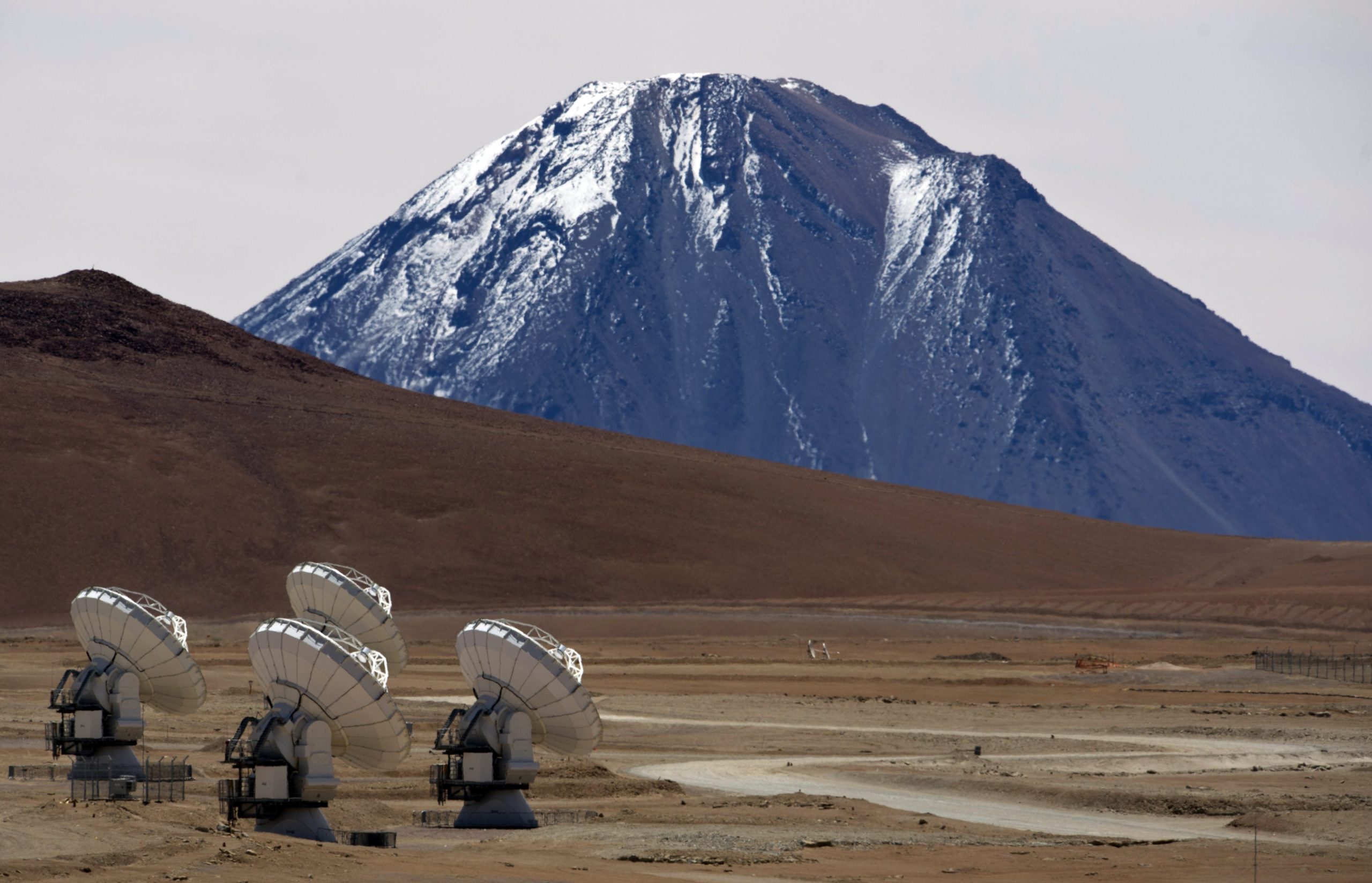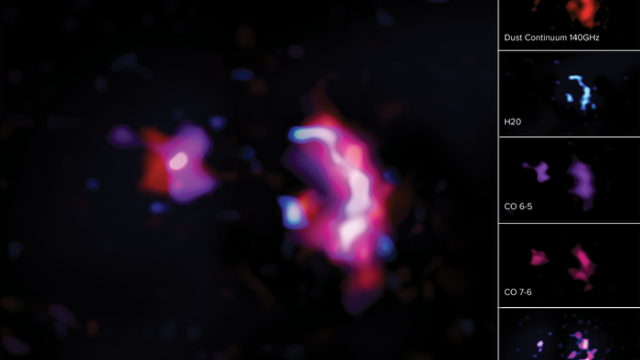Scientists studying the most massive known galaxy in the early universe have found evidence of water in it, an intriguing observation that sheds light on how the universe has evolved.
This massive galaxy is actually a pair of galaxies, which are known together as SPT0311-58. First discovered in 2017, the galactic duo is seen as they were when the universe was a mere 780 million years old (it’s now encroaching on its 14 billionth birthday). Finding water there makes it the most distant detection of the stuff in a regular star-forming galaxy. The team’s research was accepted for publication in The Astrophysical Journal.

“This galaxy is the most massive galaxy currently known at high redshift, or the time when the Universe was still very young,” said Sreevani Jarugula, an astronomer at the University of Illinois and a co-author of the recent paper, in a National Radio Astronomy Observatory press release. “It has more gas and dust compared to other galaxies in the early Universe, which gives us plenty of potential opportunities to observe abundant molecules and to better understand how these life-creating elements impacted the development of the early Universe.”
It may look like a couple magenta smudges, but that distant galaxy is essentially a repository of information about the universe shortly after the Big Bang. SPT0311-58 was found by researchers using the Atacama Large Millimetre/submillimeter Array, or ALMA, one of the best telescope arrays around for looking at the beginnings of the universe.
ALMA is located high in Chile’s Atacama Desert, giving it terrifically sharp and unpolluted views of the night sky. The array also drove the recent finding, which comes from a study of the galaxy’s gas content. Besides water molecules, the researchers also found carbon monoxide.

“This exciting result, which shows the power of ALMA, adds to a growing collection of observations of the early Universe,” said Joe Pesce, an astrophysicist and ALMA Program Director at the National Science Foundation, in the same release. “These molecules, important to life on Earth, are forming as soon as they can, and their observation is giving us insight into the fundamental processes of a Universe very much different from today’s.”
Things were pretty energetic earlier in the universe, so young galaxies (meaning the most ancient ones we see today) produced stars at a much greater rate than our own galaxy does now. Looking at the types of gases and dusts in those galaxies and their relative proportions can help astronomers answer questions about the rate of star formation and how galaxies like SPT0311-58 interact with one another and the interstellar medium.
ALMA has a terrific habit of imaging these faraway smudges and discerning the minutiae that make them up, thereby helping astronomers better understand the beginning of everything and, maybe, what gave rise to us. Here’s to ALMA and all the discoveries it’s still to make.
